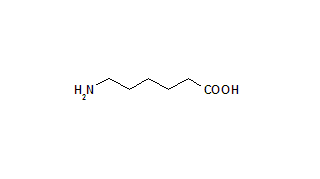Few treatment modalities for the critically ill have experienced a roller coaster ride like the use of extracorporeal membrane oxygenation (ECMO). At various times, ECMO has been hailed as "life saving"; at other times, its widespread use has been seriously questioned, primarily because of the invasiveness of the technique, the potential (and very real) complications involved, the lack of a randomized trial demonstrating unequivocal efficacy, and the improving care of the critically ill patient that has increased survival even without the use of such a procedure. Originally proposed and investigated as a treatment for ARDS in the adult patient, (1) ECMO rapidly became the treatment of choice for newborns with respiratory failure unresponsive to conventional ventilator management. ECMO "centers" proliferated throughout the United States, and then later worldwide, and thousands of newborns were treated with the technique. It seemed no newborn ICU was complete without an ECMO apparatus of its own. There is no doubt that many newborns are alive today because of ECMO, but it is also probably equally true that many were treated with ECMO who could have survived very well without it.
As the newborn ECMO experience developed, it was inevitable that the treatment would be extended to older children (2) and eventually back to the adult patient. (3) In many ways, the use of ECMO in these populations is still in its infancy, with an ongoing search for the most appropriate patients to subject to this lifesaving but also life-threatening treatment.
The body of knowledge that presently exists to support the use of ECMO for unconventional (non-neonatal) patients is primarily anecdotal, consisting of case reports and small series of patients in whom ECMO was utilized as a treatment of "last resort" when all else was failing and death seemed inevitable. In many cases, the dying process was reversed and ECMO saved the day, while in other cases ECMO proved ineffective or even disastrous. Questions were continuously raised whether anyone should be allowed to die without at least a trial of ECMO, and the search for proper patient selection continued.
Apparently, the search is not yet over. In this issue, Ahmed et al (see page 305) report the use of ECMO in a patient with a life-threatening complication of Wegener granulomatosis. The fact that the complication involved diffuse pulmonary hemorrhage makes this case report rather unique and worthy of wide dissemination. At our own center, we have had the opportunity to treat > 800 newborns and children with ECMO,
and have generally used pulmonary hemmorrhage as a relative contraindication to ECMO because of the requirement of anticoagulation during the ECMO course. The potential consequences of fully anticoagulating a patient with preexisting major hemorrhage are obvious, and have caused many ECMO centers to avoid treating such patients. This report by Ahmed et al, although only a single case, should force a reevaluation of this approach.
The published experience of the use of ECMO in patients with pulmonary hemorrhage is limited but encouraging, (4) and the case reported by Ahmed et al in this issue of CHEST (see page 305) adds to this growing body of literature. The potential for anticoagulation to cause a significant hemorrhage in patients treated with ECMO has been recognized since ECMO was first attempted, and is certainly reemphasized in the case reported herein as a significant hemorrhage developed from placement of a chest tube in a patient receiving ECMO. Interestingly, the pulmonary hemorrhage did not recur while the patient was anticoagulated, suggesting that perhaps the reduction in ventilator pressures while receiving ECMO resulted in a decrease in barotrauma, resulting in cessation of alveolar hemorrhage. One of the most important benefits of the use of ECMO is the ability to reduce ventilator pressures and rates, and inspired oxygen levels to decrease the adverse effects these might have on alveolar structure and function. Undoubtedly, the ability to briefly conduct ECMO without anticoagulation at the onset of treatment and the use of aminocaproic acid, as outlined by the authors, were also of great help.
What can be learned from a single case report that might benefit a larger population of critically ill patients? Active hemorrhage from the lung or elsewhere may not be an absolute contraindication to ECMO. Tight control of the level of anticoagulation, platelet transfusions, and the use of aminocaproic acid may help control the rate of hemorrhage and allow the initiation and continued use of ECMO. Diffuse alveolar hemorrhage may be aggravated by barotrauma associated with high-pressure ventilator settings and may respond to reduced settings. ECMO can allow such reduction to occur. Finally, ECMO should at least be considered for all patients with potentially reversible pulmonary failure, even if there is little or no literature support and common sense argues against its use.
REFERENCES
(1) Zapol WM, Snider MT, Hill JD, et al. Extracorporeal membrane oxygenation in severe acute respiratory failure: a randomized prospective study. JAMA 199; 242:2193-2196
(2) Weber TR, Kountzman B. Extracorporeal membrane oxygenation for nonneonatal pulmonary and multiple-organ failure. J Pediatr Surg 1998; 22:1605-1609
(3) Peek GJ, Moore HM, Moore N, et al. Extracorporeal membrane oxygenation for adult respiratory failure. Chest 1997; 162:759-764
(4) Kolovos NS, Schuerer DJ, Moter FW, et al. Extracorporeal life support for pulmonary hemorrhage in children: a case series. Crit Care Med 2002; 30:577-580
Thomas R. Weber, MD
St. Louis, MO
Dr. Weber is Professor of Pediatric Surgery and Pediatrics, Saint Louis University School of Medicine.
Reproduction of this article is prohibited without written permission from the American College of Chest Physicians (e-mail: permissions@chestnet.org).
Correspondence to: Thomas R. Weber, MD Cardinal Glennon Children's Hospital, 1465 South Grand Boulevard, St. Louis, MO 63104; e-mail: Weberm2@slu.edu
COPYRIGHT 2004 American College of Chest Physicians
COPYRIGHT 2004 Gale Group



